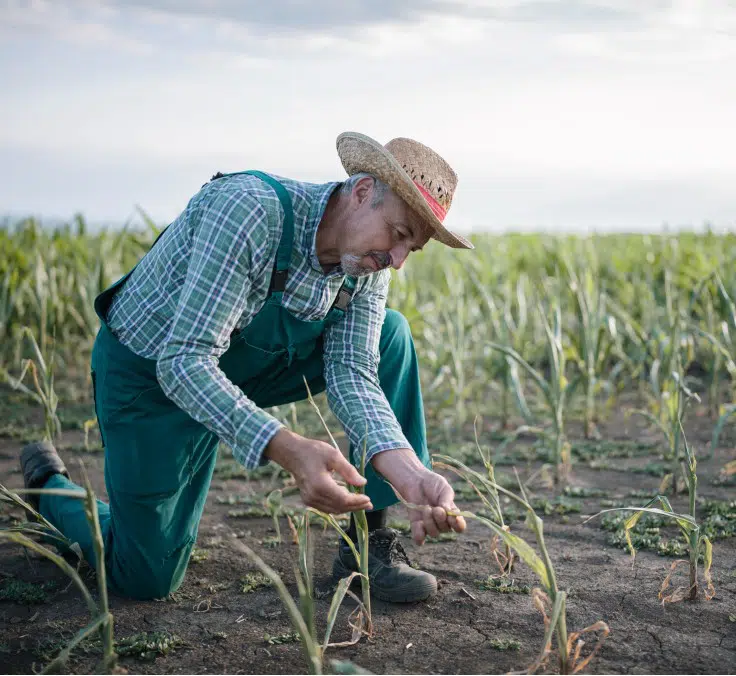SUSTAINABILITY| 05.24.2024
The green path of the agricultural sector
The agricultural sector joins the fight against climate change by developing technologies for biodiversity conservation, efficient resource management, and soil protection.
Agriculture is a key sector for food sovereignty, the economy, the social fabric of rural areas and, of course, for human survival. Its significant impact on accelerating climate change underscores the importance of promoting its transition to more sustainable models. According to a chart by Our World in Data based on data from the United Nations Food and Agriculture Organization, 50% of the planet’s habitable land is devoted to agriculture, and at the same time, according to the World Bank, this sector consumes 70% of the planet’s drinking water.
Agriculture's survival depends on adaptation to climate change
 That’s why César Marcos Cabañas, coordinator and head of communications for the Alliance for Sustainable Agriculture (ALAS), emphasizes that there are “three pillars” of action when it comes to the goals of the 2030 Agenda: “Agriculture in balance with natural resources is essential, because without resources, agriculture cannot survive. It must also be economically sustainable, because if the numbers don’t add up, no economic activity is possible. Finally, the social aspect is crucial, as agriculture is the backbone of the rural economy and culture.”
That’s why César Marcos Cabañas, coordinator and head of communications for the Alliance for Sustainable Agriculture (ALAS), emphasizes that there are “three pillars” of action when it comes to the goals of the 2030 Agenda: “Agriculture in balance with natural resources is essential, because without resources, agriculture cannot survive. It must also be economically sustainable, because if the numbers don’t add up, no economic activity is possible. Finally, the social aspect is crucial, as agriculture is the backbone of the rural economy and culture.”
Not only that, but adapting agriculture to climate change is crucial for its survival. Among the various strategies for achieving this, technology, along with artificial intelligence, could prove to be great allies. “Due to its location, the Iberian Peninsula suffers more from the effects of climate change than other regions in Europe,” Marcos explains. The rural world is grappling with prolonged droughts, cycles of highly intense and increasingly scarce rainfall, and, most notably, abrupt temperature changes, all of which jeopardize entire harvests and have disastrous consequences for producers. In a country so vulnerable to these phenomena, the presence of agricultural insurance, providing economic protection to farmers against any environmental challenge, is essential. Especially because they address the many challenges facing the industry, such as disease, chemical contamination, and uncontrollable weather events. “Spain has been a pioneer in offering these insurance policies both publicly and privately. Through different companies, they are reaching farmers to alleviate the effects of natural disasters, which are becoming increasingly frequent,” Marcos explains.
Innovation at the service of adaptation
Despite all these challenges, agriculture is becoming more resilient thanks to AI, data analytics, and the monitoring of predictive models. "There are digitized agriculture models that use technology such as sensors, satellite imagery, and artificial intelligence to predict water and fertilizer usage, minimize pesticide application, and ultimately reduce production costs. It also helps us to be more environmentally sustainable and to produce the best harvest. It's a way to play with data-informed decisions that help us better adapt to climate change,” Marcos explains.
Moreover, agriculture is adapting to climate change. "For example, vineyards in Spain are increasingly being planted further north, in regions with fewer high temperature cycles," he says. In addition, localized irrigation, or drip irrigation, controlled by digital mechanisms and tools, is increasingly being used to conserve water.
Marcos: “Due to its location, the Iberian Peninsula suffers more from the effects of climate change than other regions in Europe"
But for Marcos, what the industry is really looking forward to is the use of CRISPR technology, which consists of genome editing techniques. It's about accelerating something that nature takes a long time to do on its own: adapt. "In this context of climate change, adaptation is done in the laboratory, and CRISPR provides a technique for modifying or editing a gene to make seeds more resistant to drought or certain pests, for example. This resistance can contribute to a subsequent reduction in the use of phytosanitary products,” says Marcos.
The pursuit of sustainability in agriculture is crucial for achieving several of the Sustainable Development Goals (SDGs), highlighting the importance of agriculture and rural development. For Marcos, this can be achieved through “best agricultural practices.” Examples of this could include regenerative agriculture, as well as adopting practices that conserve soil and biodiversity and promote ecosystem health. Or conservation agriculture, which emphasizes abstaining from tilling the land after harvest to prevent releasing CO₂ into the atmosphere and avoid using polluting tractors. In this way, the next planting is done using different technologies on the same land, allowing the soil to be enriched with organic matter. Fusing technology and innovation with these best agricultural practices will thus create a shield for the sector, so that it can stay resilient in the fight against the environmental challenges of climate change.
RELATED ARTICLES:




